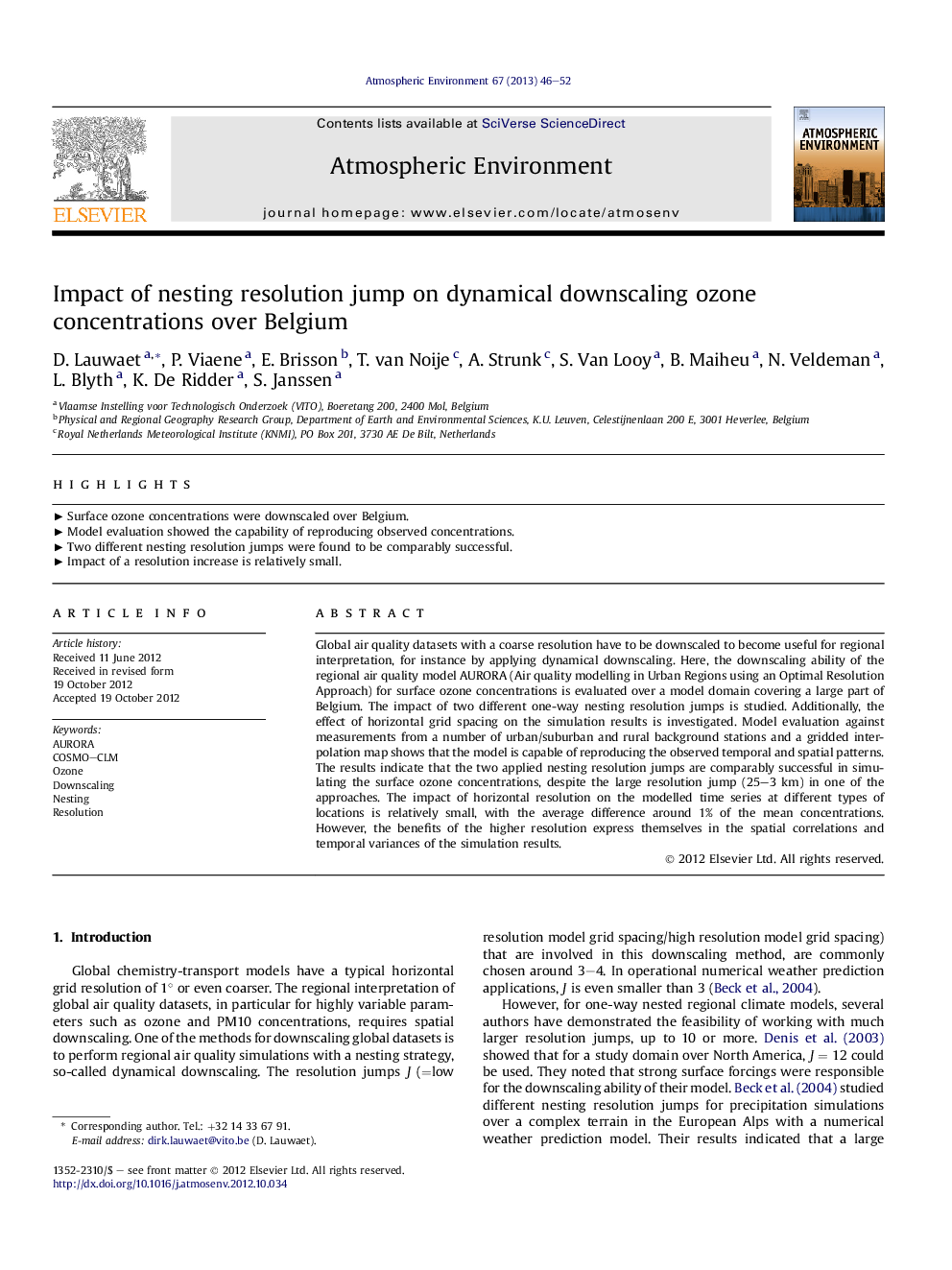| Article ID | Journal | Published Year | Pages | File Type |
|---|---|---|---|---|
| 4438475 | Atmospheric Environment | 2013 | 7 Pages |
Global air quality datasets with a coarse resolution have to be downscaled to become useful for regional interpretation, for instance by applying dynamical downscaling. Here, the downscaling ability of the regional air quality model AURORA (Air quality modelling in Urban Regions using an Optimal Resolution Approach) for surface ozone concentrations is evaluated over a model domain covering a large part of Belgium. The impact of two different one-way nesting resolution jumps is studied. Additionally, the effect of horizontal grid spacing on the simulation results is investigated. Model evaluation against measurements from a number of urban/suburban and rural background stations and a gridded interpolation map shows that the model is capable of reproducing the observed temporal and spatial patterns. The results indicate that the two applied nesting resolution jumps are comparably successful in simulating the surface ozone concentrations, despite the large resolution jump (25–3 km) in one of the approaches. The impact of horizontal resolution on the modelled time series at different types of locations is relatively small, with the average difference around 1% of the mean concentrations. However, the benefits of the higher resolution express themselves in the spatial correlations and temporal variances of the simulation results.
► Surface ozone concentrations were downscaled over Belgium. ► Model evaluation showed the capability of reproducing observed concentrations. ► Two different nesting resolution jumps were found to be comparably successful. ► Impact of a resolution increase is relatively small.
